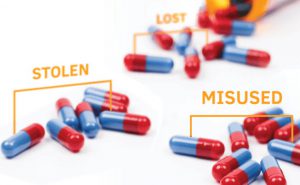 Autopsy results released earlier this month confirmed that a fentanyl overdose was the cause of death for 57 year old, multi-platinum recording artist – Prince. The death of such a prominent pop culture figure generated media headlines across the world, helping to bring public awareness about the prescription drug epidemic our country is facing.
Autopsy results released earlier this month confirmed that a fentanyl overdose was the cause of death for 57 year old, multi-platinum recording artist – Prince. The death of such a prominent pop culture figure generated media headlines across the world, helping to bring public awareness about the prescription drug epidemic our country is facing.
MarketWatch reported that “the singer’s fatal overdose of pain medication is also America’s problem.” According to the Centers for Disease Control and Prevention, more people died from drug overdoses in the U.S. in 2014 than during any previous year on record and more than half (61 percent) involved pain medication.
Fentanyl is an opiate used to treat pain and is 25 to 40 times more potent than heroin and 50 to 100 times more potent than morphine, according to the National Drug Early Warning System (NDEWS). The agency has issued alerts due to information showing a rise in fentanyl-related deaths and law enforcement seizures.
Data from the Quest Diagnostics Drug Testing Index™ (DTI) also indicates the percentage of American workers testing positive for illicit drugs such as marijuana, cocaine and methamphetamine has increased since 2014 in the general U.S. workforce. In addition, the positivity rate for 6-AM, a specific marker for heroin, doubled in the general U.S. workforce between 2011 and 2014.
“Our DTI data mirrors research from the National Drug Intelligence Center (NDIC) which also shows that heroin use has increased markedly in recent years. With the high costs associated with prescription opiates, some drug users may be turning to comparatively cheaper alternatives like heroin,” said Dr. Barry Sample, Director of Science and Technology, Quest Diagnostics.
Alongside our country’s crisis with painkillers, heroin addiction continues to make frightening headlines. Through Prince’s passing, we are reminded of his humanity and how addiction can affect everyone, sometimes with deadly consequences.
To learn more about drug testing, visit our website.
Photo courtesy of MarketWatch
 Your Privacy Choices
|
Privacy Notices
|
Terms
|
Language Assistance / Non-Discrimination Notice | Asistencia de Idiomas / Aviso de no Discriminación | 語言協助 / 不䈚視通知
Your Privacy Choices
|
Privacy Notices
|
Terms
|
Language Assistance / Non-Discrimination Notice | Asistencia de Idiomas / Aviso de no Discriminación | 語言協助 / 不䈚視通知



















MarketWatch reported that “the singer’s fatal overdose of pain medication is also America’s problem.” According to the Centers for Disease Control and Prevention, more people died from drug overdoses in the U.S. in 2014 than during any previous year on record and more than half (61 percent) involved pain medication.
Fentanyl is an opiate used to treat pain and is 25 to 40 times more potent than heroin and 50 to 100 times more potent than morphine, according to the National Drug Early Warning System (NDEWS). The agency has issued alerts due to information showing a rise in fentanyl-related deaths and law enforcement seizures.
Data from the Quest Diagnostics Drug Testing Index™ (DTI) also indicates the percentage of American workers testing positive for illicit drugs such as marijuana, cocaine and methamphetamine has increased since 2014 in the general U.S. workforce. In addition, the positivity rate for 6-AM, a specific marker for heroin, doubled in the general U.S. workforce between 2011 and 2014.
“Our DTI data mirrors research from the National Drug Intelligence Center (NDIC) which also shows that heroin use has increased markedly in recent years. With the high costs associated with prescription opiates, some drug users may be turning to comparatively cheaper alternatives like heroin,” said Dr. Barry Sample, Director of Science and Technology, Quest Diagnostics.
Alongside our country’s crisis with painkillers, heroin addiction continues to make frightening headlines. Through Prince’s passing, we are reminded of his humanity and how addiction can affect everyone, sometimes with deadly consequences.
To learn more about drug testing, visit our website.
Photo courtesy of MarketWatch